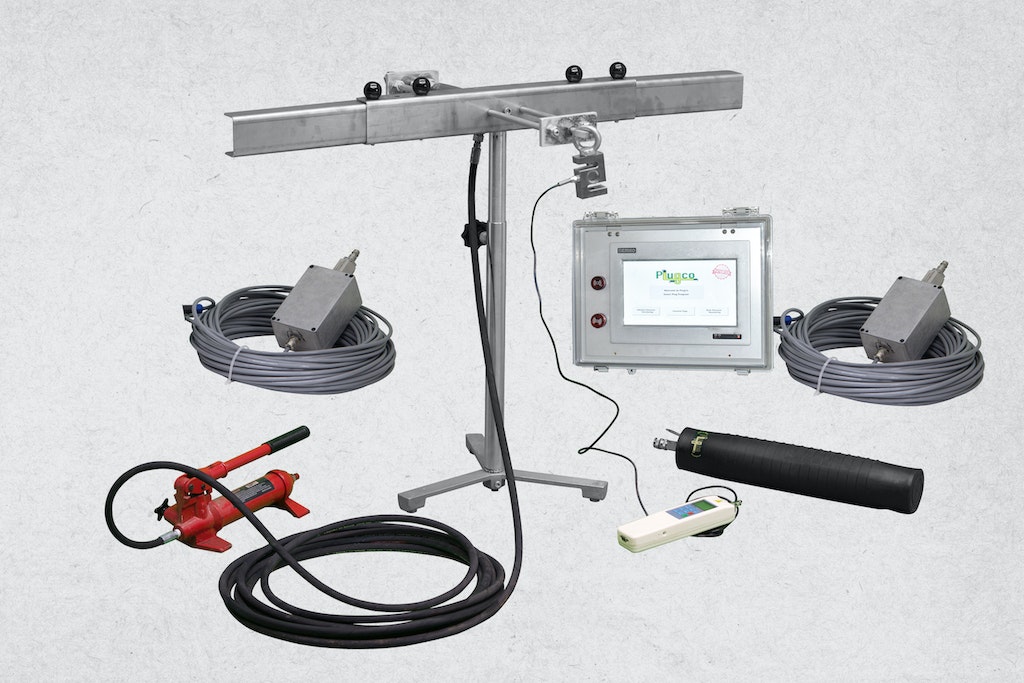Those maintaining pipelines in utility systems and plants are commonly challenged by ruptures — or simply valve replacements or necessary routine repairs — in network sections where flow cannot be stopped by valves or diversion. In these cases, one routine solution is to insert an inflatable plug via hot tapping upstream from the pipe section in need of maintenance. When inflated, the plug blocks flow so that repair work can take place safely and efficiently.
In fact, the use of inflatable plugs is so routine that tables are available that make it easy for network operators and pipeline repair subcontractors to calculate the size and composition of the needed plug. Operators simply plug in pipe diameter and fluid pressure to determine the backpressure needed, and order the appropriate plug from vendors.
But that common method of determining the proper plug type is actually too easy; tables only provide reliable backpressures for clean and dry pipe in good condition. But pipes or lines that have been in use for long enough to need maintenance are neither clean nor dry, and they often have sewer particles, debris, corrosion, calcium buildup, tuberculation or other conditions that cause roughness or irregularity in the pipe. Any or all of these factors can affect real backpressure dramatically, and inflatable plugs ordered based on the backpressure provided by tables can fail in the field — and a plug that fails or slides mid‐project is unsafe, and very costly in terms of project delays and resources. Not to mention the cost of the plug itself, which has proven to be unfit for its purpose.
All these costs can be avoided by use of the patented Smart Plug system from PlugCo.
Fast, precise, smart
The difficulty in determining real backpressure, described above, has long been a barely acknowledged problem in pipeline maintenance. PlugCo has addressed this issue directly with the Smart Plug system, which includes a sophisticated physical sensor and backpressure calculation software, which work together to quickly establish the precise real-world backpressure in the system needing maintenance. The physical sensor is also durable and reusable, suitable for use in all gravity pipelines and low-pressure oil and gas lines. The sensor is itself based on an inflatable plug that can be applied in a wide range of pipe diameters, can be used as a temporary plug in some situations, and comes equipped with an acoustic and visual pressure monitoring and alarm system that greatly improves worker safety when in use.
How does it work?
The Smart Plug analytical process starts with the insertion of the Smart Pipe Stopper, the physical sensor, which is a system composed of four components:
- An inflatable plug, expandable to a range of pipe diameters.
- The Pressure Monitoring and Acoustic and Visual Alarm System, which is connected to the plug.
- The loading mechanism, which inserts, centers and inflates the plug, and applies hydraulic force and measures backpressure.
- The Backpressure Calculator Program Software, which takes data from the loading mechanism and inputs on pipe diameter and composition to determine real backpressure, and outputs data to the alarm system.
Work begins at the nearest isolatable section of pipe; the plug is inserted, centered and inflated by the loading mechanism to initial pressure specified by backpressure software; and in-line force is applied to pull the inflated plug until it slides or slips. The force causing slide is measured by a dynamometer and recorded. This loading operation is performed five times, and each force value is input to the back-pressure calculation software, which yields a precise and accurate real-world backpressure.
Operators can then use this information to confidently order the correct inflatable plug without spending more than is needed, or ordering a custom plug that is inadequate and could fail when in use.
In some situations, the Smart Plug can itself be used as a temporary plug enabling pipeline maintenance. In these cases, the pressure monitoring and alarm systems, perfectly calibrated by testing, remain operative and increase job site safety.
Many advantages
PlugCo began developing the Smart Plug system when supplying equipment for an undersea waterline maintenance project in Oman — theoretical calculations suggested a backpressure of 56 tons was needed to prevent slippage. This enormous value prompted PlugCo engineers to begin a lengthy research project with hundreds of phases and tests that ultimately led to the creation of a system that offers many real benefits to network operators in more ordinary situations.
The Smart Plug system:
- Is the first system that accurately established backpressure in real-world conditions
- Makes possible cost‐effective design and ordering of inflatable plugs that will not fail mid‐project
- Provides easy to insert and use components that disassemble easily and are reusable
- Provides accurate reports on backpressure variance during use
- Provides a monitoring and alarm system that improves safety
- Reduces project costs by avoiding delays due to plug failure
By seriously addressing a problem that has challenged the pipeline industry since inflatable plugs have been used, PlugCo has created a system that makes network maintenance safer, more efficient and more cost‐effective.
